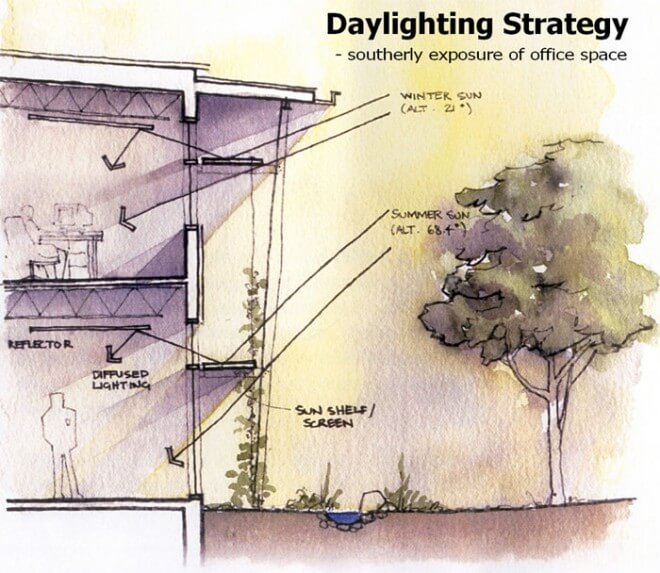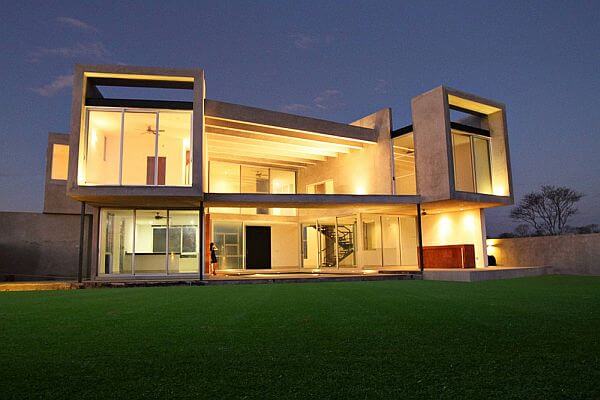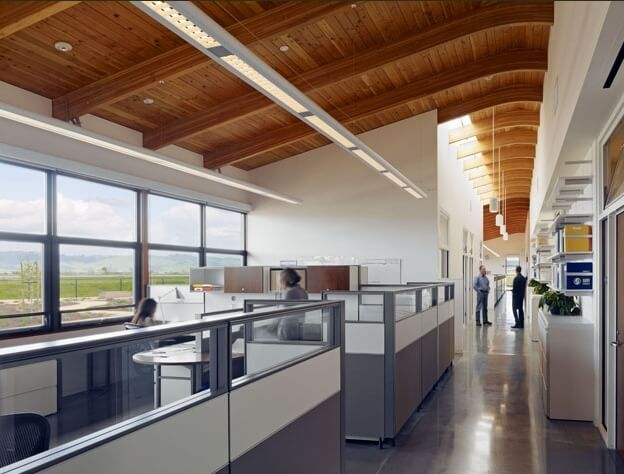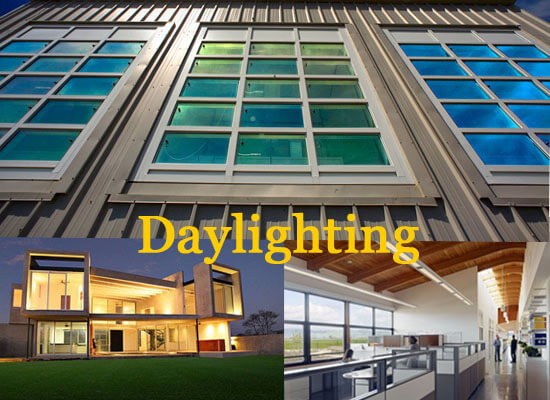
Daylighting: Why You and Your Home Need Natural Light
11/24/15
Environments built with lots of natural light are always desired, but we rarely think of the benefits natural light has in our homes. Even rarer are homes that take advantage of those benefits and effectively use daylighting. This also holds true in our workspaces and just about anywhere we have a built environment. How can we change this? It comes down to designers helping owner-builders understand the benefits of daylighting and helping them make the choice to implement daylighting designs into their homes and work places. This blog post is to help designers get the good word of daylighting out and for you, the owner-builder, to get a better understanding how it improves your home or workplace.
Defining Daylighting
Not every home or lighting designer will tell you what daylighting is or how it will improve the living quality and energy efficiency of a built space. There are several reasons for this, but the largest reason is that that the average owner-builder’s designer is detached from where or how your building will come to be. Daylighting is nothing more than placing windows and other openings along with reflective surfaces in key places to provide effective internal lighting. However, because most homes and other structures are designed before they are placed on the property, windows and other openings that would allow daylight in are usually not placed in key areas that would allow for optimal use. 
Setting Yourself Up for Daylighting Benefits
Depending on where you are in the building process, you should position yourself to best receive the benefits of daylighting. If you have yet to purchase the property, let alone the designs for your structure, this positioning is quite literal. Find land that gets good sunlight. If you are living in the Northern hemisphere, it should have a clear view of southern sky. When you choose or make a design for your building, its main windows should take advantage of the all-day sunlight you will get from southern sky. If, however, you have already purchased your land and your designs, you may not have the option of physically positioning your home to use the southern sky, but you can make modifications to your plans that take advantage of the southern sky. If your building is already built, it may be a matter of renovating new windows and other openings in your home. How to design your building’s daylighting and accomplishing those design feats is too large a topic to cover in this post, but if you want the benefits of daylighting it is important you set yourself up to receive them.
The Energy Benefits of Daylighting
Probably the most obvious benefit of daylighting is its ability to save energy. It makes sense that the better designed your building is to harvest daylight, the less you have to pay to artificially light it. What you may not have considered is the potential daylighting has to save energy in heating and cooling. Southern facing windows keep your home cooler in the summer by not allowing high, direct sunlight to enter the home. Compare that to windows that allow light to enter from the east or west that get direct summer light in the mornings and evenings. Whereas in the winter, the lower winter sun is able to enter the home to warm it all throughout the shorter days. Designing your use of natural light saves energy in reduced artificial lighting, but if carefully considered, also reduces your heating and cooling costs.
The Health Benefits of Daylighting
Daylight should be a natural thing in most of our lives. Before the invention of artificial lighting it typically was. Our bodies need the varying levels of daylight we receive at different times in the day to help us regulate our circadian rhythms, or sleep patterns. The Department of Energy states that productivity goes up and absenteeism goes down with effective daylighting in a workplace. The fact is that not having natural light in our daily lives does have negative health effects and so allowing daylight into our built spaces compliments better sleep patterns, increased comfort, and reduced eyestrain. 
Combining Natural Light with Artificial Light
Artificial lighting has just as many benefits as natural lighting if designed right. When well-designed artificial and natural lighting is combined, it can lead to even greater energy and health benefits. Daylighting cannot provide sufficient amounts of light for some tasks throughout day and definitely not during the night. Through the use of dimmer controls, we can provide just the right amount of artificial light for task lighting during low daylight hours, helping to save money on lighting while still providing safe and effective light for the task at hand. Advances in artificial lighting color and quality have allowed us to more accurately mimic natural lighting in our built spaces, giving us the right type of light for the right time, space, and/or function. This is especially helpful to our health and productivity when we consider how we react to different types of light. A bluer hue of white light carries a higher frequency and is more stimulating than a redder hue of white light, which has a lower frequency. This is similar to the redder hues found in our morning and evening sunlight and the bluer hues found in our noonday sunlight. If we are taking advantage of daylighting in our homes, the artificial lighting we use at night should help us to relax and rejuvenate from our day’s work and therefore should have a warmer color temperature or have those redder hues in it. Inversely, in workplaces we want to supplement our daylight with bluer or cooler color temperatures that keep us more alert and stimulated while we work.  As you can see, daylighting can benefit us greatly to both help us reduce energy consumption and improve health. When used along with well-designed artificial lighting it leads to even greater benefits. If you are considering or in the process of building a home or workplace, take advantage of well-designed lighting and allow it to enhance your life.
As you can see, daylighting can benefit us greatly to both help us reduce energy consumption and improve health. When used along with well-designed artificial lighting it leads to even greater benefits. If you are considering or in the process of building a home or workplace, take advantage of well-designed lighting and allow it to enhance your life.
Want More on the Lighting Design Front?
If you’ve found this piece informative and helpful, don’t forget to subscribe to Birddog’s Lighting Design Blog. We’ll keep you in the know and give you inspiring tips, tricks, and projects to apply in your home, office, or workplace. Fill out the form below and receive our latest lighting design content as it happens. [mc4wp_form]


